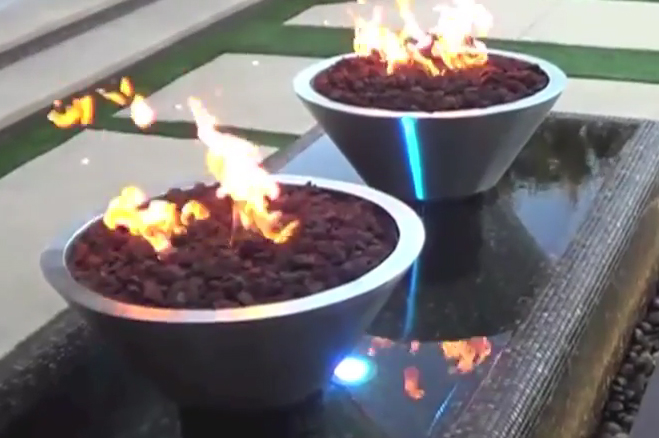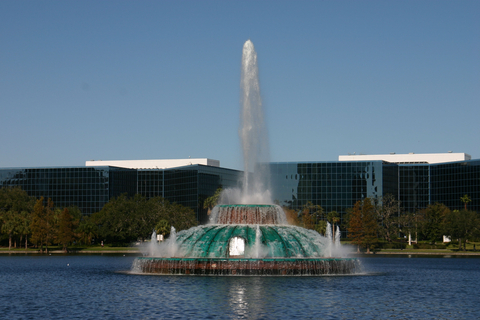fountain design
Way back in my Pool Spa News editor days - I want to say circa 1990, but I may be off by a year or two - we ran a piece on a waterfeature built by Mike Stachel of Mt. Lake Pool & Patio (Doylestown. Pa.) to meet the needs of the Philadelphia Zoo's relentlessly cute capybaras.
I've forgotten all of the details of the article (which, as a small twist of fate would have it, was written by future WaterShapes editor Eric Herman) other than the relentless cuteness of the creatures for whom the watershape was built, but enough of the memory of the project lingered that I made a point of stopping by the zoo while visiting the city ten or twelve years later to see how the critters were getting on. I also wanted to see whether they were as darned cute in person as they had been in Mike's photographs.
I wasn't prepared in any way for the fact that they were actually too large to be considered cute. They were taller and longer and more girthsome than the photos I'd seen had led me to believe. I couldn't help thinking of them as supersized squirrels with bigger, sharper teeth and voracious appetites to match. The horror . . .
Fortunately, there was much else to see at the zoo. Before I was anywhere near the capybara enclosure, in fact, I strolled up to and past the Impala Fountain and knew I'd come back for a longer look once I'd paid my respects to my rodent friends and Mike Stachel's handiwork.
The Impala Fountain belongs to a class of waterfeatures for which I have something of a weakness - that is, fountains that feature wild animals interacting with water. I love the horses running up the steps at the entrance of Denver's Mile-High Stadium, for example, and I'm truly smitten by the mustangs that race across the stream in williams square irving,
The difference in this case is that the impalas (executed between 1950 and 1963 by Philadelphia sculptor Henry Mitchell, are distinctly abstract - basically skeletonized versions of a dozen of these great and amazing leapers set in an arc above fountain jets, doubtless in flight from one sort of predator or another.
To me, this is an ideal combination of sculpture and water where the kinetic nature of the fountain jets lends a direct sense of movement to the static sculptural elements. It's simply drop-dead gorgeous - and well worth a visit the next time you visit the Philadelphia Zoo to see Mike Stachel's fearsome capybaras.
Let's stroll back to February 2010: It was about the time we at WaterShapes started getting serious about establishing an Internet presence - and more than a year before we stopped publishing printed editions of the magazine and went all-digital. Back then, we saw the web site as more of a
In my experience, watershapers have a tendency to focus a bit too narrowly on one or another aspect of the craft - some on pools and spas, others on ponds or fountains. You get the idea: In speaking with clients, there's an inclination to play to one's strongest cards - and I think that can be
I love the fact that she was a friend and compatriot to Jackson Pollock, Willem de Kooning, Mark Rothko and other leading lights among the abstract expressionists. I love that she lived to be 98 and, just before her death in 2010, was still engaged enough by the world around her to start communicating through her art in support of the lesbian, gay, bisexual and transgender community. I love her name, which would have been the perfect alias for an avant-garde artist of the 20th Century but for the fact that it's really hers. Finally, I love her big sculptures, including the 25-foot-tall one in Agnes R. Katz Park in Pittsburgh, Pa.
Maybe the only thing about Louise Bourgeois' work I think I don't like is that she decided that the 25-foot-tall one in Katz Park would make a good fountain. I just have to disagree with her decision and don't find myself being satisfied or happy in its presence.
The park took shape in 1998 and was dedicated to the memory of Ms. Katz, a prominent patron of the arts. The fountain sculpture dominates the space, which was designed by the renowned architect Michael Graves in collaboration with Daniel Urban Kiley, a distinguished landscape architect, as well as Ms. Bourgeois, who also contributed three paired benches (seen partly in the photo above by Daderot | Wikipedia) that, because of their shapes, have lent the space its nickname: "Eyeball Park."
I savor the oddly disturbing eyeball benches and admire the towering nearby structure as a sculpture, but as I mentioned above, I have my problems with it as a fountain. Yes, I get the symbolism of the two flows at the top joining into a single flow down the structure and its supposed reference to the Allegheny and Monongahela coming together in Pittsburgh to form the Ohio River. But the water element nonetheless seems forced: The sculpture existed before its placement was a consideration; Ms. Bourgeois was a committed New Yorker rather than a Pittsburgher; and I can't help thinking that the plumbing might have been an afterthought?
Mainly, I'm bothered by the timid way the water flows down through the sculpture's levels: It starts out nicely enough at the top but flows unenergetically downward, sometimes narrowing, sometimes expanding as it drops, leaving the structure mostly dry. I tried to convince myself that this worked; ultimately, however, I just couldn't buy it.
Even though it doesn't transport me, however, I do appreciate the fact that the tower runs with heated water and flows a considerate 365 days a year. It was springtime when I saw it, but I wish I'd seen it draped in icicles in the dead of winter (as seen in some photos linked below). I've always been a sucker for the concept of frozen waterfalls, streams and fountains, so, for part of the year at least, this fountain might just win me over.
For all my criticism, I still think it's a great little park in the heart of the city's thriving cultural district - well worth a visit. And frankly, I'd be delighted to hear from anyone who can offer a persuasive defense of the project, because it's pretty clear to me that I'm looking for reasons to appreciate this composition as much as I like so much of Louise Bourgeois' other work!
To see a video of the fountain in operation, click here.
To see the fountain partly covered in ice, click here.
The first time I saw it, the water of the Linton E. Allen Memorial Fountain had been turned off for servicing. In that inert condition and with tiny figures creeping over its greenish surface, it looked to me as though a squat flying saucer had dropped in to slurp up water from Lake
Consider this scenario: A company you've worked with in the past calls your firm in to work on a project. You're told the setting is magnificent: You'll be working with a huge sculpture in the most prominent position in front of one of the most renowned sports stadiums on the planet - all of this in a city that prides itself on brilliant architecture. The job is yours, but here's the thing: The client is the wife of Jerry Jones, owner of the Dallas Cowboys, and he's not supposed to know what's really going on out front of his own stadium until an unveiling ceremony scheduled for his birthday. And it gets better: The call comes at the end of April and the unveiling ceremony will take place in October. To say it's a fast-track project would be putting it mildly. Once the design was finalized, we were to have ten weeks to turn approximately a million and a half pounds of concrete, steel and stone into a working fountain. And along the way, the stadium was to host a range of events - a Monster Truck Jam, a FIFA World Cup Soccer qualifying match, a Professional
Some projects carry obvious prestige, and this is one of them: The pair of reflecting pools and the sculpture that rises above them stand in front of AT&T Stadium in Arlington, Texas - home to the Dallas Cowboys and, several times a year, host to nationally televised football games. But certain of these prestige projects take on extra dimensions - and this was one of them, too: The mirror-finished dish that surmounts the watershapes


















